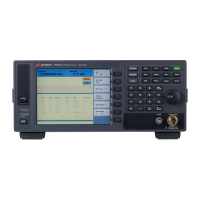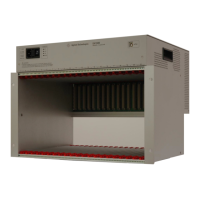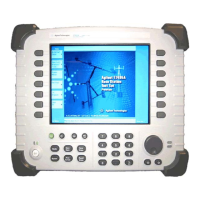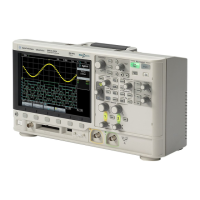15 UART/RS232 Triggering and Serial Decode
342 InfiniiVision 7000B Series Oscilloscopes User’s Guide
Searching for UART/RS232 Data in the Lister
The oscilloscope’s search capability lets you search for (and mark) certain
types of UART/RS232 data in the Lister. You can use the [Navigate] key
and controls to navigate through the marked rows.
1 With UART/RS232 selected as the serial decode mode, press [Search].
2 In the Search Menu, press Search for; then, select from these options:
• Rx Data — Finds a data byte that you specify. For use when the DUT
data words are from 5 to 8 bits in length (no 9th (alert) bit).
• Rx 1:Data — For use when the DUT data words are 9 bits in length
including the alert bit (the 9th bit). Finds only when the 9th (alert)
bit is 1. The specified data byte applies to the least significant 8 bits
(excludes the 9th (alert) bit)
• Rx 0:Data — For use when the DUT data words are 9 bits in length
including the alert bit (the 9th bit). Finds only when the 9th (alert)
bit is 0. The specified data byte applies to the least significant 8 bits
(excludes the 9th (alert) bit).
• Rx X:Data — For use when the DUT data words are 9 bits in length
including the alert bit (the 9th bit). Finds a data byte that you
specify regardless of the value of the 9th (alert) bit. The specified
data byte applies to the least significant 8 bits (excludes the 9th
(alert) bit).
• Similar choices are available for Tx.
• Rx or Tx Parity Error — Finds a parity error based on the parity you have
set in the Bus Configuration Menu.
• Rx or Tx Any Error — Finds any error.
For more information on searching data, see “Searching Lister Data” on
page 259.
For more information on using the [Navigate] key and controls, see “To
navigate the time base” on page 74.
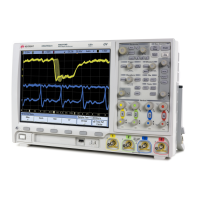
